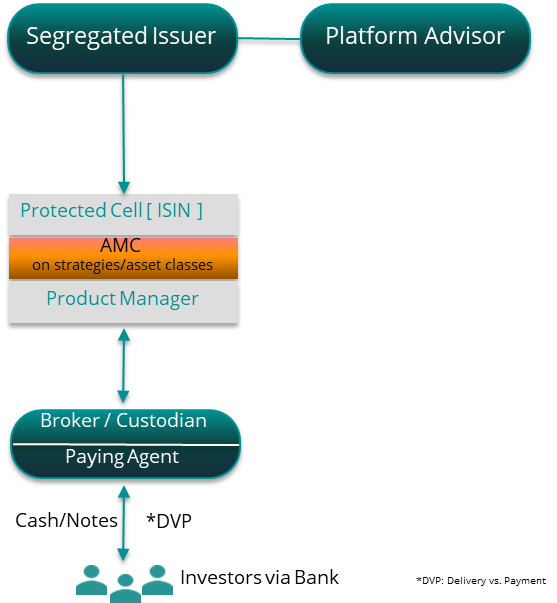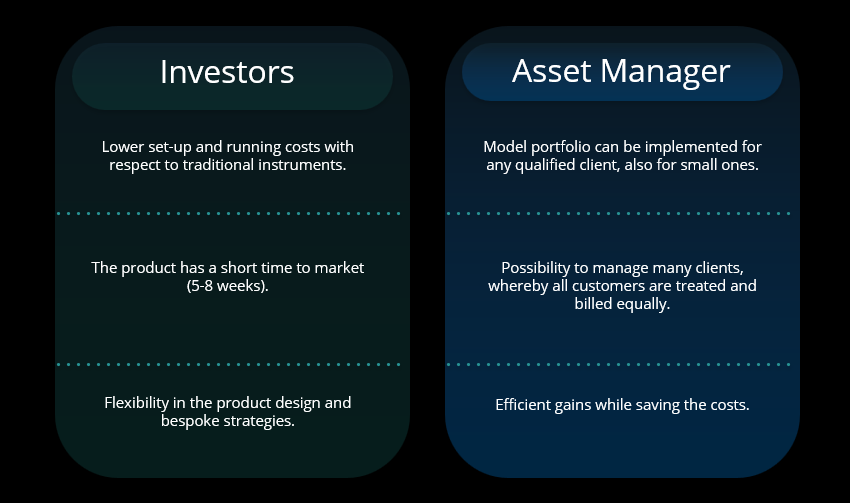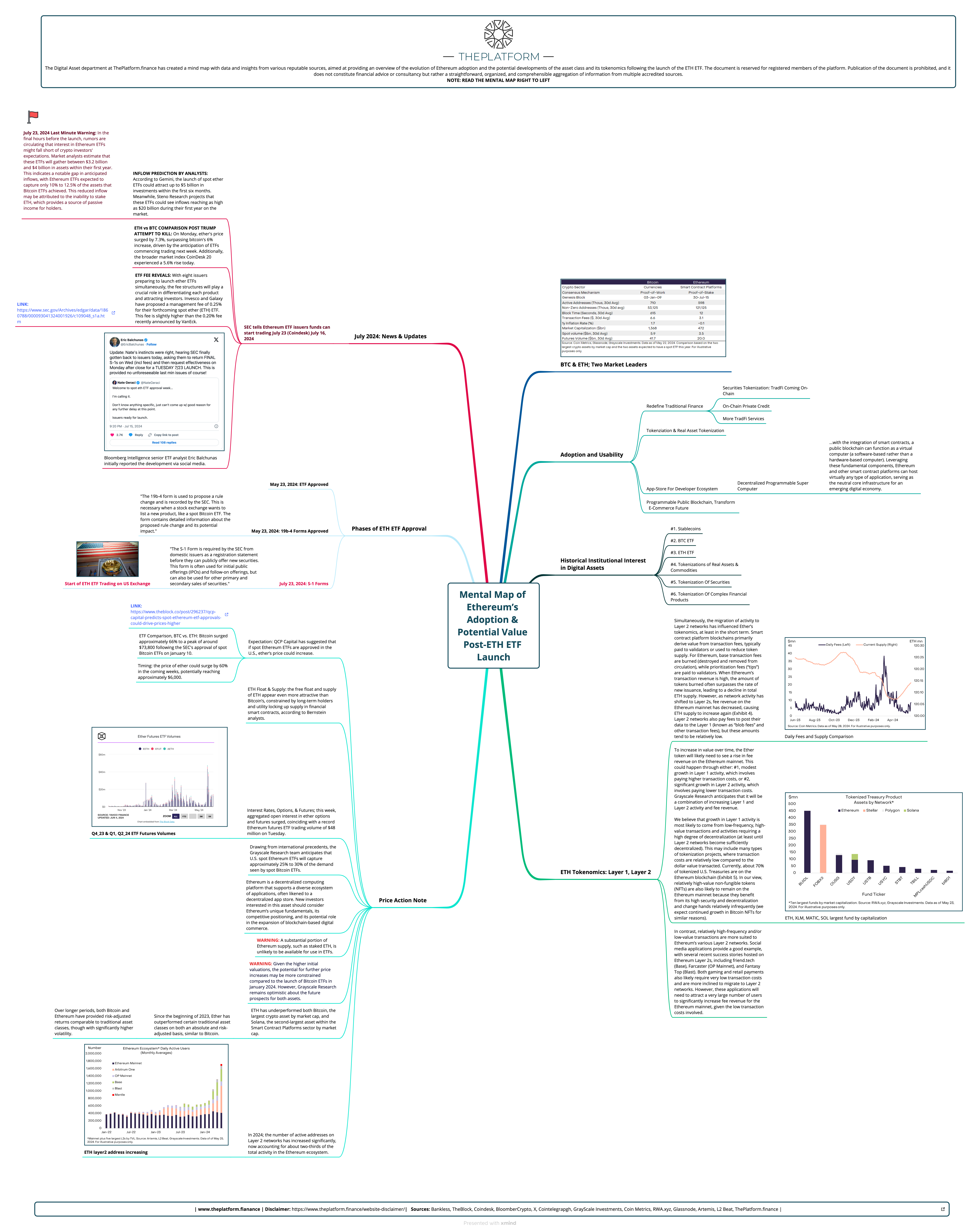“Securitised products with a maximum degree of flexibility, managed by a professional asset manager with many different investment strategies.
AMCs are bankable products characterized by a low-cost structure for qualified investors.”
Executive Summary
- Actively Managed Certificates (AMCs) are investment vehicles that offer institutional/qualified investors a dynamic approach to investing.
- By using an AMC, the Asset Manager (AM) manage the portfolio and the investor can join it using a single tool, ensuring high efficiency and an appealing cost.
- AMCs are regulated financial instruments which can be listed on international markets.
- They offer investors the opportunity to invest in different strategies (discretionary or algorithmic) and/or asset classes in a versatile and flexible manner that can be rebalanced over time.
- All in all, AMCs constitute an extremely dynamic instrument and put their focus on capital protection and return.
AMC Market Opportunity
- Actively Managed Certificates have gained significant attention in the investment landscape as a potential alternative to traditional mutual funds and exchange-traded funds (ETFs). Their ability to match professional management and active investment strategies is a true benefit.
- They experienced a significant growth in the last years, particularly in the last three years; nowadays the global AMC market exceeds $1 trillion in assets under management.
How AMC Works
- Actively Managed Certificates (AMCs) are structured financial vehicles replicating an underlying asset’s performance.
- The underlying asset can be composed of various asset classes, including stocks, bonds, ETFs, digital assets, funds, debt securities and algorithmic/quantitative strategies.
- Thanks to the democratization of finance in recent years, AMCs, previously only available to large financial institutions, have become accessible tools. They enable companies, family offices and holding companies to operate in the financial market in the same way as an institutional player, thus granting access to opportunities and instruments traditionally reserved only for financial institutions.
AMC As Company Funding Source
Example scenario: an asset manager or a financial company needs a regulated and bankable vehicle to present themselves to the market and to collect capital from qualified investors such as family offices, high-value individuals, holding companies, and private funds.
Traditionally available fundraising options may not be satisfactory for the following reasons;
- Mutual Funds: mutual funds main drawbacks are the excessive costs and the high initial masses required.
- Managed Accounts: managed account often lack flexibility and require minimum investment sizes. There are many considerations and elements to take into account when considering this investment option.
One solution to these problems is the issuance of an AMC, with the aim of implementing alternative/innovative strategies to raise capital. It is intended to ensure the network of investors the correct execution of the deal through a regulated vehicle that can comply with precise rules, defined by the financial supervisory authorities of the countries from which the AMC is issued, to protect the investor himself.
This approach is a flexible solution, extremely effective in terms of time and cost, it is also a regulated instrument for which the characteristics and underlying assets are defined a priori.
“Clever solution for both sides:
Financial company and fund manager and also for investors, who gain access to innovative/alternative strategies for portfolio’s diversification.”
What are the Goals
- Objective to maximize the returns while keeping the costs.
- These instrument have significantly lower set-up and running costs with respect to traditional financial vehicles. Also the time to market is very short (5-8 weeks).
- AMC’s structure allows for very flexible products and for a wide range of possible underlyings to select.
- The AMC is a bankable instrument, therefore buyable through any credit institution and kept in the bank custody of the investor.
- The instrument is subject to clear terms and to official documentation called Term Sheet, issued by the regulated entity issuing the financial instrument, where all the features of the product are defined.
- AMCs are open ended products, which allow for a free entrance/exit at any time of the life cycle of the vehicle.
- The total repayment of the invested capital will be made at the maturity of the product.
Risks of the Deal
- Actively Managed Certificates provide exposure to the risk of the underlying index or strategy.
- The AMC risk is also linked to the compliance and risk management policies of the asset manager who is in charge of the strategy.
- There is no risk of fraud from the asset manager managing the product strategy.
- As an alternative financial product, the characteristics of the transaction are agreed between the parties involved and set out in a specific contractual documentation, the Term Sheet. Since this is an alternative investment, it is necessary to make one’s own personal assessment (defined as an assessment) of the transaction and the conditions set.
- NO issuer-related risks are present, as AMCs are segregated* financial products.
Focus on AMCs’ Segregation
- Every AMC that is issued is segregated.
- Segregation is the process of separating the assets of the AMC from the assets of the issuer or product sponsor. The purpose of this segregation is to protect investors by ensuring that the assets held in the product are not mixed with the issuer’s assets and thus are not subject to the issuer’s financial risks or liabilities.
- In general, segregation is an important safeguard for investors in AMCs and other investment products, as it ensures the rights of the product benefit the investors.
AMC Set-up and Core Figures

- The platform advisor defines the investment, as part of the investment committee. The platform advisor is involved in defining the set-up costs of the product for a 20% and receives 20% of the performance fee obtained from the investment strategy.
- The securitization vehicle provider (segregated issuer) is the company in charge of the set-up of the securitization vehicle from which the AMC will be issued. The securitization vehicle or segregated issuer, is a dedicated vehicle, which meets the professional requirements of Guernsey law, has no issuer risk, and is fully segregated. The vehicle can issue AMCs (Actively Managed Certificates), and cross-asset / cross-custodians. The AMC is an independent cell, which is not only segregated from the issuer itself but also from all other products of the same vehicle (if any).
- The asset manager is responsible for the execution of the investment strategies, together with the investment committee. The asset manager executes the asset allocation decided by the investment committee for the AMC and is responsible for compliance and risk management procedures. The choice of the asset manager is up to the investor and the product advisor during the following product set-up phases. Asset managers will have to demonstrate compliance requirements of professionality and good reputation according to the current financial regulations.
- The investment committee comprises the technical staff of VA Investments, the investors, and the asset manager (who is responsible for compliance and risk management). The objective of the investment committee is the evaluation and analysis of investment strategies, based on the market situation, analyses, and research of numerous investment opportunities. The role of the investment committee is to monitor investment performance and make the right changes to the product strategy, based on the investor’s future needs.
- The investor, or liquidity provider, provides capital and is involved in the investment committee together with the technical figures. The investor benefits from the performance of the product in which his capital has been invested.
Investors’ VS Asset Manager’s Sides

Disclaimer
Index:
Data Room AccessData room access is available only for accredited and institutional investors due to FCA permissions.
To gain access, click and fill out the following form. Our compliance team will grant you access within 24 hours.




